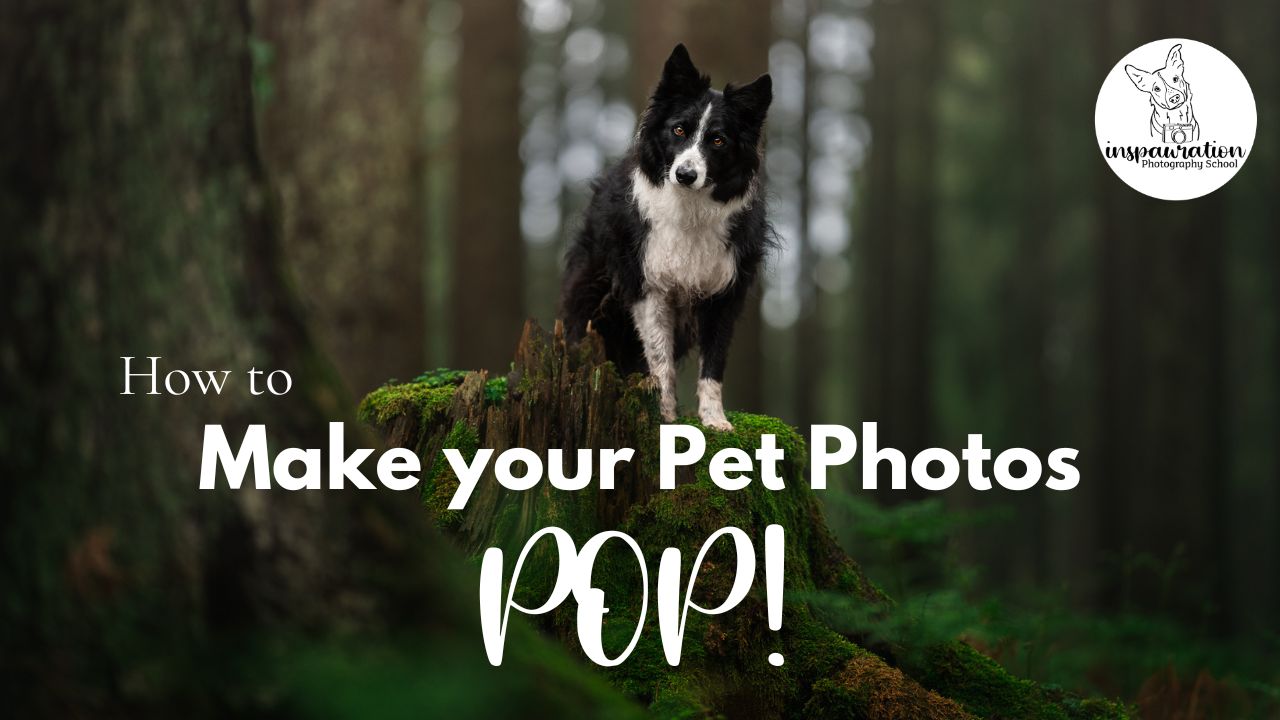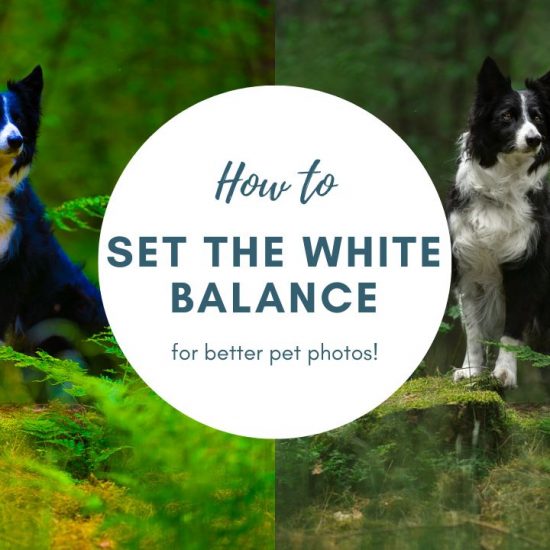Everyone wants their photos to “pop”, whether it’s a beautiful dog standing majestically in the forest, or a cute puppy bathed in magical light, you want people to see your photos and go WOW. But how? Is it all about editing, using Photoshop to add contrast and saturation? Is there some secret sauce that makes some photos more impressive than others?
In general, photos that really “pop” are a combination of MANY factors:
- choice of lens
- pose and gazing direction of the dog
- lighting and use of location/composition
- editing (particularly using contrasts and creating vignettes).
While I cover each of these points (and plenty more) in the Learning Journey membership, and how you can utilise them to take and edit photos like those you see here at Inspawration Photography, in this blog post I want to talk about how you can use contrasts to make your subject POP!
Because it’s one thing to have the whole photo popping off…. and another for your subject to be the star of the show.
About Contrasts
We’re going to be discussing contrasts a lot throughout this article.
I’m not talking about the contrast slider. I’m talking about the differences between things. Because obviously, the more different we can make something from something else, the more it will stand out…
But be aware!!! The more you specifically edit your subject in one way and your background in another way, the more disconnected they’ll look.
There are 5 main types of contrasts we can manipulate in our photos:
- high contrast vs low contrast
- light vs dark
- saturation
- detail
- contrasting colours
High vs Low Contrast
Contrast is how strong the blacks and whites in your image are.
If EVERYTHING is high contrast, with lots of strong blacks and whites, OR… everything is LOW contrast – with no blacks and whites, just shades of grey…. then it’s unlikely anything will stand out more than anything else.
In my photos, I tend to make sure the areas behind my subject are lower contrast than the subject himself.

Light vs. Dark
This one is pretty straightforward.
If I put a black dog against a dark grey or black background, he’s unlikely to stand out. Similarly, a white dog against a white or bright background will have a hard time standing out.
Instead, putting a dark dog against a mid-toned or slightly lighter background, will make sure they “pop”.
Of course, as with anything written here, these are not rules. It CAN be fun to put a dark dog against a dark background… just be prepared for him to blend in more, and use that to your advantage.

Ready to make your photo POP?
If you want to learn even more about this topic, including HOW to incorperate these techniques into your editing, make sure you sign up for the “Make your dog POP Masterclass”.
Or… just grab it inside the Learning Journey!
Masterclass: Make your dog POP!
Saturation
Using contrasts in saturation can also make our subject “pop”.
It’s easy to simply make the entire image saturated with strong colour! This is certainly eye-catching… however, your subject can easily “drown” in all that colour – especially if he’s a coloured dog! A low saturation subject (black, white, or grey) may stand out against a more colourful, saturated background…
Just be careful not to go overboard!
And at the same time, a coloured dog may “pop” more against a slightly more desaturated background!
A low saturation dog on a low saturation background, vs. low saturation dog on saturated background.
Detail
Something with a lot of sharpness, detail, and texture is going to stand out compared to something soft and blurry, right?
Therefore, it makes sense that we want our subject – and especially their eyes – to be sharp, detailed, and textured. This makes them pop and stand out compared to our blurry backgrounds!
This is also a reason why most pet photographers prefer soft, blurry backgrounds (not sure how to achieve this? I have a whole blog post for you!) as it will make their subjects stand out much more!
Contrasting Colours
Lastly, we have contrasting colours.
If you look at a colour wheel, colours on opposite sites will be contrasting (or complementary.) This means that they go well together, but also make the other colour pop.
A great example is Journey – my red/brown dog – who looks fantastic and “pops: so strongly in rich emerald green backgrounds.
On the other hand, as you can see in the example below with Momo, putting dogs against a similar coloured background is very harmonious, but makes them blend in a bit more!
Remember...
- Not all of these tips come from editing…
- There’s PLENTY more to making your photos pop than just contrasts
- Going overboard with these techniques MIGHT make your subject pop… in a bad way. Too much of anything is rarely good!
- Sometimes it’s fun to play with camouflage, showing how the dog is a similar colour to the background, for example.
- If you want to learn more, come and join us in the Learning Journey! 😉
Until next time, enjoy playing with all the different kinds of contrasts in your photos!
Emily, Loki & Journey







